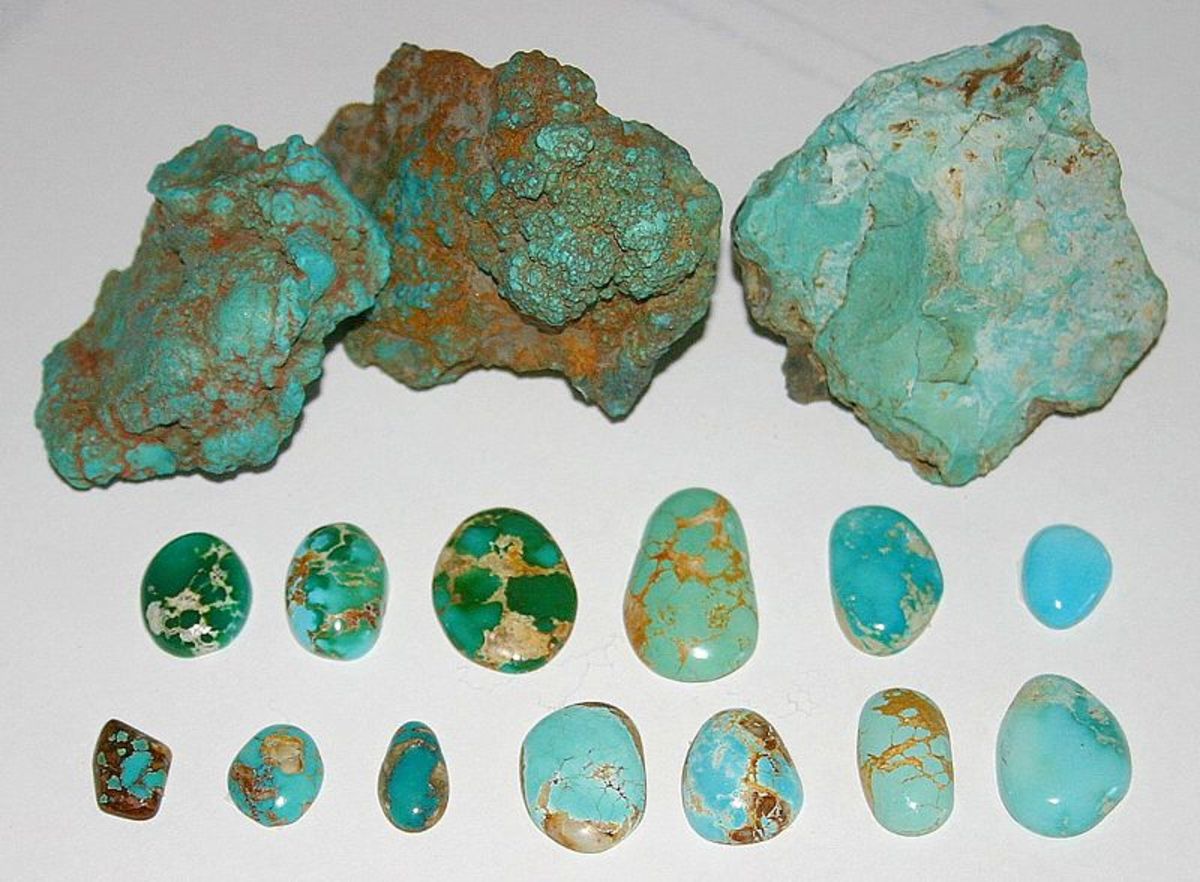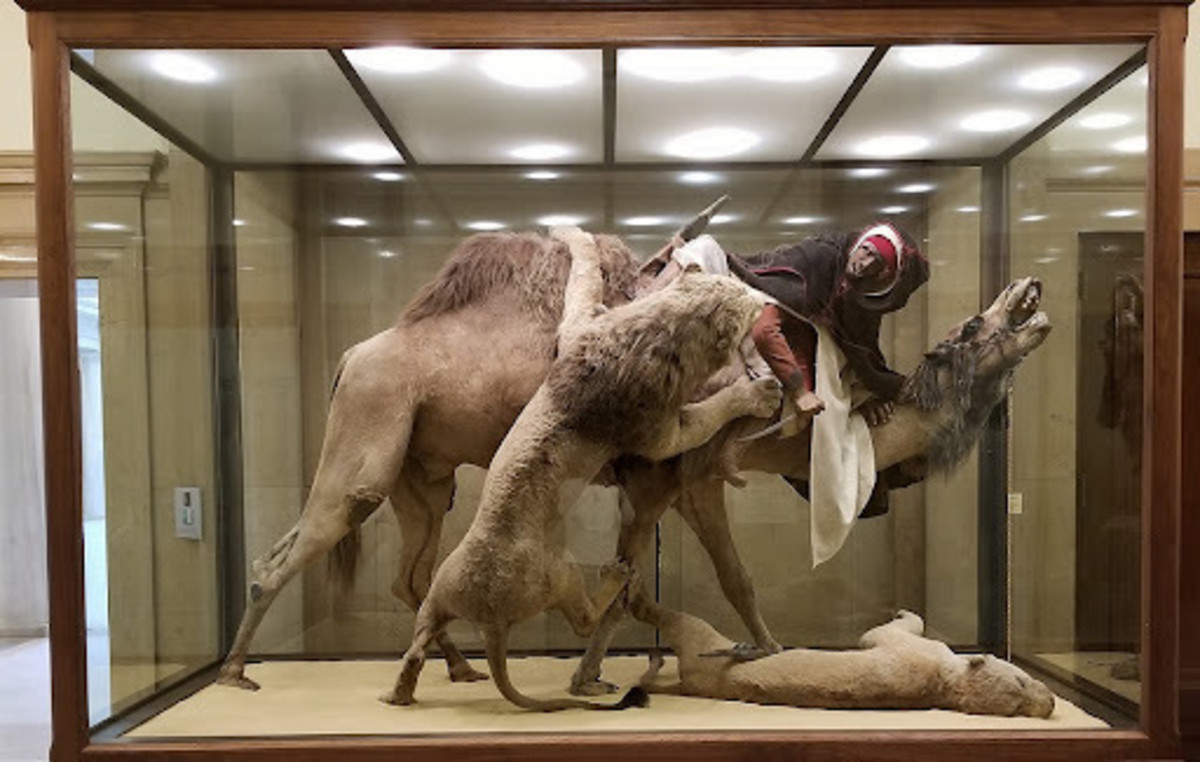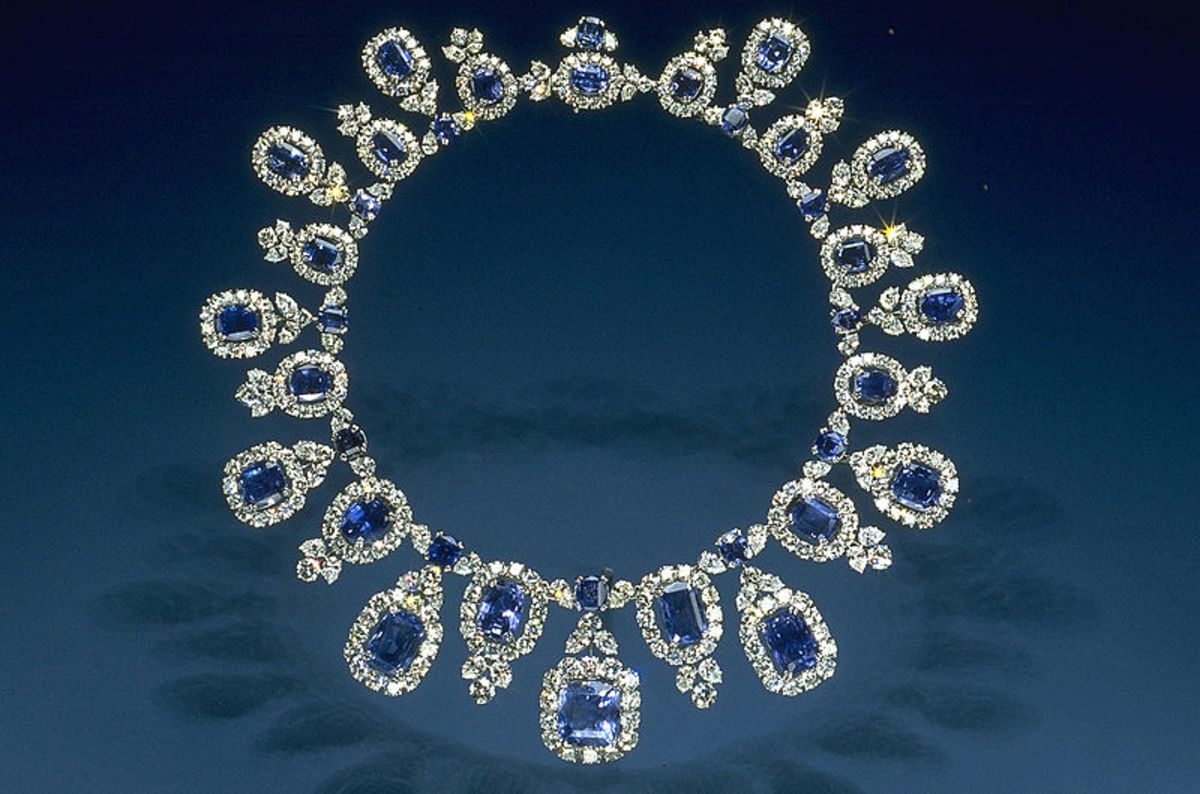Romancing The Stone: Gem Lore - A Valentine's Guide to the History & Significance of Some Popular Gemstones
Ever since the first curious cave-dweller broke open a geode and offered its sparkling, gorgeously hued interior to his vastly surprised but appreciative mate, man has scoured the earth for shiny stones to please his beloved. Take heed, all of you who now seek the perfect Valentine's Day gift for your special someone.
Flowers are first - nothing says "I love you," better than a dozen long-stemmed red roses. Candy is dandy - a luscious tray of her favorite indulgence all wrapped up with a big red bow, can be well nigh irresistible. Champagne on ice is a great backstop - a nice bottle of Cristal, chilling in a silver ice-bucket, two tall champagne flutes nearby.
Imagine though, on the table beside the champagne glasses, a discreet, flat box, the sheen of black velvet glowing in the candlelight, proclaiming its unmistakable origins in some jeweler's shop. How better to remind your sweetheart of your devotion than with a present of fine gems - a delicate pendant with matching earrings, or a gem-encrusted tennis bracelet? Perhaps the gift of pearls would please your love?
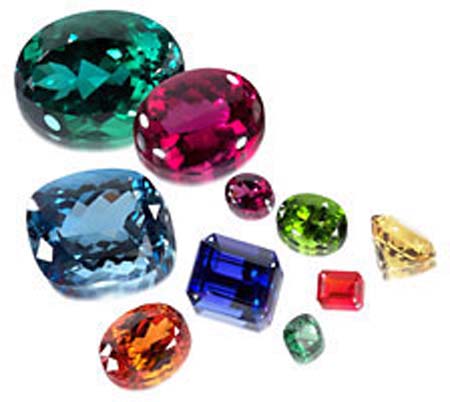
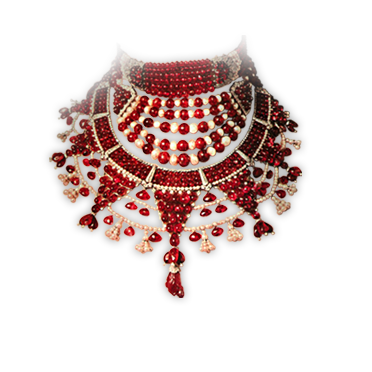

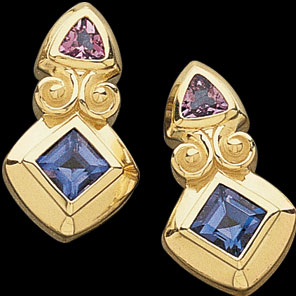
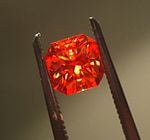
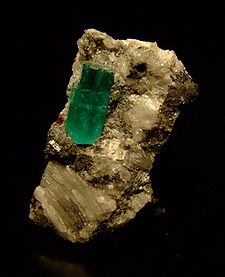
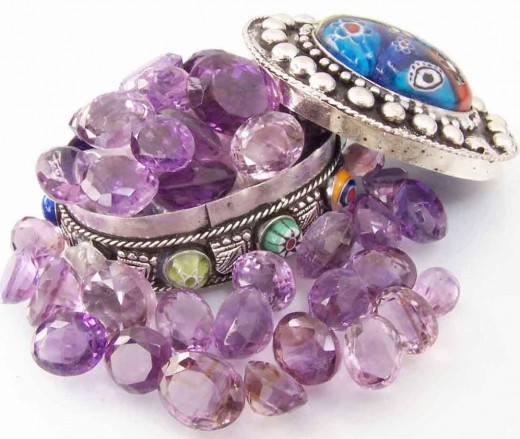
Whatever you chose, from a simple birthstone tribute to simply something lovely to wear on that special occasion, gemstones have dazzled and intrigued us since the beginnings of time.
Almost every culture to use gemstone as adornments has ascribed mystical or medicinal powers to various stones. Many gems are attributed with the ability to ward off evil or control negativity.
The ruby is the stone of wisdom, fire and passion. The traditional birthstone of July and rarest of gems, a rarely occurring, red form of the mineral corundum, it was also thought to confer great power on its bearer.
The Stone of Emperors, and worn only by royalty in Roman times, the ruby was believed to focus the vision and energy of the wearer. Highly prized in Asian countries, rubies were used to ornament the armor, scabbards, and harnesses of noblemen in India and China
The sapphire, birthstone of the September born and called by ancients the gem of the heavens, is the "other" form of corundum, the same mineral that constitutes rubies. Believed to contain the power of wisdom, it was thought it would help the wearer to solve any puzzle and overcome any obstacle.
The Star of India, perhaps the most famous sapphire in history and currently on display at the American Museum of Natural History in New York City, is thought to be the largest star sapphire in the world.
The 182 carat Star of Bombay, housed in the National Museum of Natural History in Washington D.C., is another stellar example of a blue star sapphire.
Only one other form of that mineral besides the ruby has been given its own name instead of being called a particular color of sapphire, the Padparadscha, whose name comes from the Sinhalese word for lotus blossom.
The Padparadscha is a pink-orange corundum, originally mined in Sri Lanka, but also found in Vietnam and Africa. Padparadscha sapphires are very rare and highly valued.
The emerald, birthstone of May, was thought to have great powers of healing and was worn by Romans in the time of the Caesars to prevent the "falling sickness", as epilepsy was then known. Spanish conquistadors plundered the South American emerald mines in search of their "green fire".
Emeralds are a crystal form of the mineral beryl, and owe their green color to the addition of chromium while the gem is forming.
Natural emeralds are subject to inclusions, which greatly affect the value of the gemstone. This term refers to tiny deposits of other material such as silica in the mineral as the stone is forming.
In many gemstones, such as diamonds, inclusions that affect the clarity of the stone lessen the stone's value.
In some stones, however, such as star sapphires, the inclusion actually increases the value of the stone. Many gemstones, such as amethyst, emerald, and sapphire, are expected to have inclusions, which do not greatly affect the stone's value.
Amethyst, thought by ancient Greeks to prevent drunkenness, was also worn in amulets by medieval European sailors for protection in battle.
Amethyst is the birthstone of February, and has retained its popularity as a decorative element in jewelry since early Roman times. Also prone to inclusions, Amethyst is often cut as a cabochon, and presented in a bezel setting, or as beads or polished nuggets, in modern jewelry.
Some gemstones are thought to possess healing properties...
- Gemstones: the healing stones
Healing gemstones - Read this article to find out more about how healing gemstones work. ... Gemstones used in healings can be tumbled or cut. Crystal healing should be done in... - Crystal Therapy -Healing With Gemstones
Assortment of sites covering rocks & gemstones: glossaries, therapeutic properties, cleansing and charging crystals, choosing the right healing stone for your needs... and more! - Crystals - Healing Properties of Crystals and Gemstones,
healing crystals, healing properties of crystals, swarovski crystal, quartz crystals, austrian crystals, crystals and minerals, charms and crystals, information on crystals, crystals and gems, crystals and gemstones, jewelry gemstones, meaning of gem
Birthday Gemstone Chart - Traditional/Modern
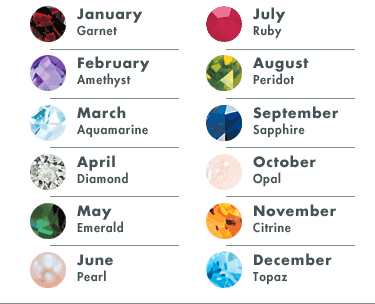
Perhaps a pair of dainty earrings or a birthstone pendant would be just the ticket. The chart to the right, as well as the chart below will help you choose the correct month, and a little research will make you knowledgeable about the gem.
How better to show your regard than by regaling your love with a bit of the lore about their birthstone.
Another variation, the zodiac birthstone chart...
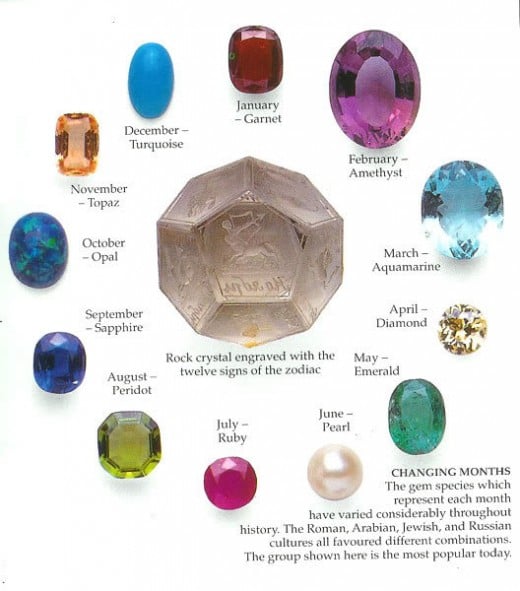
...of great price
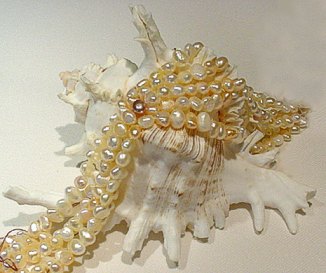
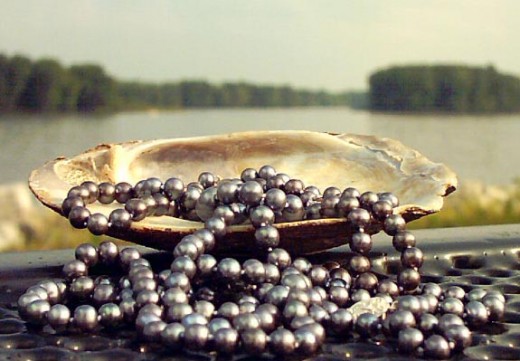
Since ancient times, pearls have been thought to possess the magical powers of the moon. It is said that Cleopatra used ground pearls in the love potion she offered to Mark Antony. Pearls dissolved in wine were a fashionable aphrodisiac in Renaissance Italy.
The oldest known pearl jewelry is a necklace found in the sarcophagus of a Persian princess who died in 520 BC, and were so valuable that the Roman General Vitellius was supposedly able to finance an entire military campaign with just one of his mother's pearl earrings.
Pearls are a traditional bride-gift in many cultures, a practice dating back to Krishna, who gave pearls to his daughter. Traditional birthstone of June, along with the Alexanderite, and symbolizing purity, they are now often given by the groom to his bride-to-be.
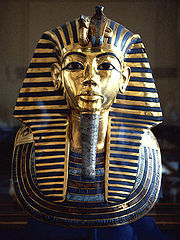
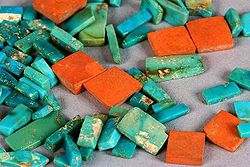
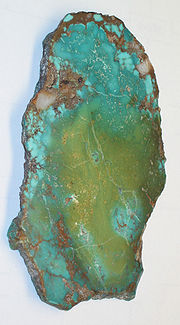
Turquoise, one of the traditional birthstones of December, was among the first gems to be mined.
Many of the historic sites are worked out, but some are still being mined, usually by hand, to this day.
The symbol of wealth in many cultures, only its prized blue color caused it to be used as a gemstone - a color so distinctive that its name is used to describe any color that resembles the stone.
Also valued for its protective qualities, turquoise was thought to change color with any change in the wearer's health.
The Egyptian use of turquoise stretches back as far as the First Dynasty and possibly earlier, with probably the best known example of the decorative use of this stone being in Tutankhamun's burial mask.
It was used to adorn rings and the great sweeping necklaces called pectorals.
Set in gold, the gem was fashioned into beads, used as inlay, and often carved in a scarab motif, accompanied by carnelian, lapis lazuli, and in later pieces, colored glass.
Turquoise, associated with the goddess Hathor, was so popular in Ancient Egypt that it became one of the first gemstone to be imitated by a glazed ceramic product known as faience.
The blue stone has been known by many names, but the word turquoise comes to us from 16th century French, either from the word for Turkish (Turquois) or dark-blue stone (pierre turquin).
This may have arisen from a misunderstanding about the stone's origins. Turquoise does not occur in Turkey, but was traded at Turkish bazaars to Venetian merchants who brought it to Europe.
In contemporary Western use, turquoise is most often cut en cabochon and bezel-set in silver rings and bracelets, or used in the form of tumbled, or roughly hewn beads in chunky necklaces.
While strongly sky blue stones are considered to be of superior value, mottled green and yellowish turquoise is also popular with artisans.
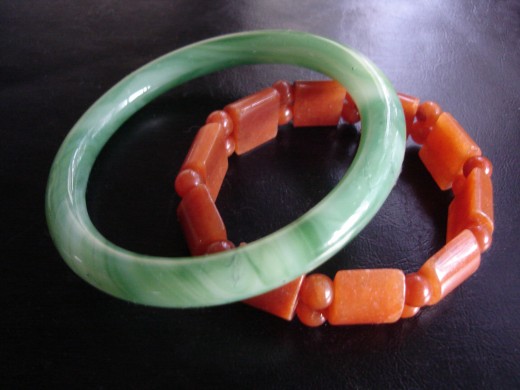

Perhaps a jade or carnelian bangle would be more to your beloved's liking. Once worn only by emperors, it is found in two forms - nephrite and jadeite.
Nephrite jade occurs in a creamy white form known in China as the highly prized "mutton fat" jade, as well as in a variety of green colors. Jadeite is found in more color variations, including blue, lavender-mauve, pink, and emerald-green.
Of the two, jadeite is rarer, documented in fewer than twelve sites worldwide. Translucent emerald-green jadeite is still the most prized variety even today.
Believed to confer longevity upon the wearer, jade was also carved into exquisite objet d'art by the skilled Chinese artisans of the Imperial court.
Quetzal jade, the bright green jadeite from Guatemala was treasured by Middle-American cultures. Kingfisher jade, the vivid green rocks from Burma became the preferred stone of post-1800 Chinese imperial scholars and rulers.
Carnelian, a variety of the silica mineral chalcedony derives its color from iron oxide impurities deposited in the stone when it is formed. The color can vary greatly, ranging from pale orange to an intense, almost blackish color.
Jewelry and decorative objects adorned with carnelian have been recovered dating from as early as 4th or 5th Century, BCE. Carnelian was used widely during Roman times to make engraved gems for signet or seal rings. These were used to imprint the wearers seal in wax wax on correspondence or other important documents - hot wax does not stick to Carnelian.
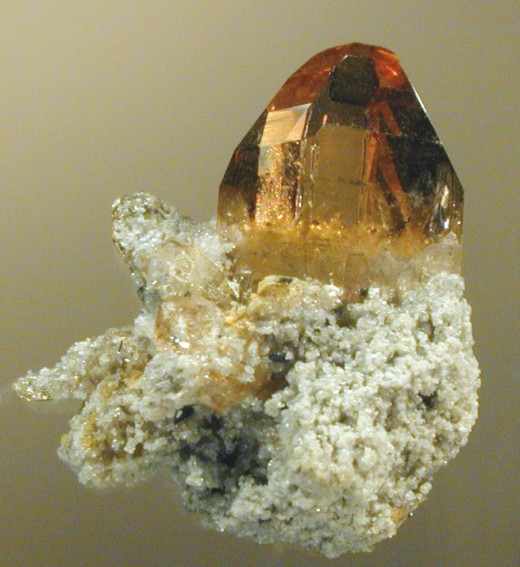
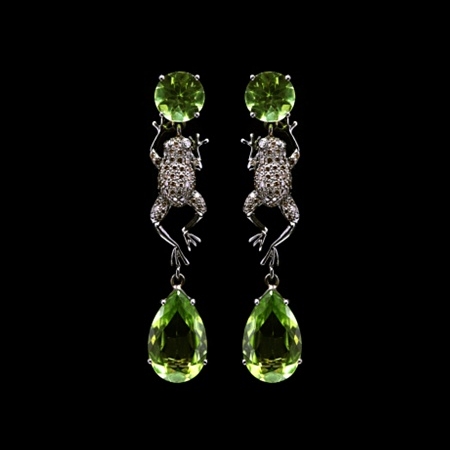
Topaz and peridot, the respective birthstones of November and August, make elegant companions. Early Egyptians believed topaz, also called Fire Stone, and its sister gem, citrine, were created from sunlight, a gift from Ra.
Topaz ranges in color from a clear transparent gem through light yellows, brown, and pink shades.
The ancient Greeks believed that topaz was the stone of strength, while during medieval times, it was thought to heal physical and mental disorders as well as prevent death.
In 1750, a Parisian jeweler discovered that the yellow Brazilian topaz becomes pink when it is exposed to moderate heat.
Nearly all the pink topaz used in making jewelry has been heat-treated, and is sometimes called burnt topaz. Such stones are often called Brazilian rubies, as is the very rare, natural red topaz.
Peridot has been valued since ancient times for protection. Prized by Egyptian pharaohs, the peridot was thought to imbue its wearer with foresight and divine inspiration.
Legend has it that pirates in the Middle Ages wore peridot amulets to protect them against evil.
The deposits on Saint John's Island in the Red Sea, mentioned by Pliny in his Natural History of AD 70, are still worked today and continue to produce fine gemstones.
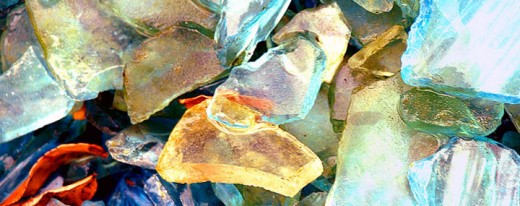
Whatever you choose to beguile your love, remember that Valentine's Day is not the only appropriate occasion for giving gems.
Birthdates and anniversaries are each assigned their respective gemstone, and if invention or inspiration fails, you can always just make a gift of diamonds.
© 2010 RedElf




